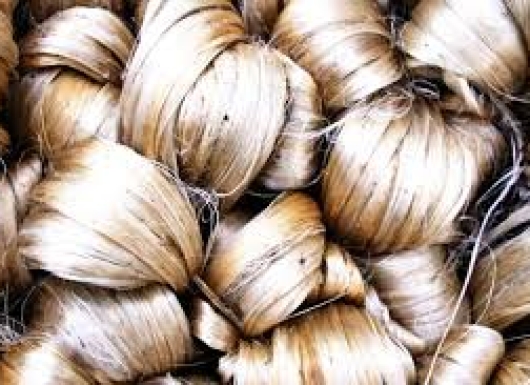Submitter: ICAR
Bast fibres are extracted from the inner bark of plants like jute, flax, banana, ramie, and hemp using either mechanical or biochemical methods. Mechanical extraction involves physical processes such as decortication and scutching to separate fibres quickly. Biochemical methods, including water, dew, and enzymatic retting, use microbial or enzymatic action to break down binding materials, resulting in higher-quality fibres. While mechanical methods are faster and suitable for industrial use, biochemical methods are more sustainable and yield softer, longer fibres ideal for textiles.

Mechanical Methods:
Biochemical Methods:
Mechanical and biochemical methods are already in use in regions where bast fibre crops like jute, kenaf, flax and hemp are cultivated, such as India, China, Bangladesh, and parts of Europe. Mechanical extraction is especially effective in industrialized farming systems with access to decortication and processing equipment. Biochemical methods like dew retting are well-suited to temperate regions with adequate moisture and microbial activity, such as Northern Part of West Bengal and Assam. Water retting has traditionally been practiced in all the jute growing states in India, where water bodies are readily available. Enzymatic retting is gaining ground in regions with controlled processing environments, where there is a focus on high-value textile fibres. These methods can potentially be expanded to Sub-Saharan Africa, where crops like kenaf can grow in semi-arid and tropical climates, supporting both fibre production and rural employment. Latin America (e.g., Brazil) also offers opportunity due to its diverse agroecologies suitable for bast crops and growing interest in sustainable fibres. Mechanized extraction could be integrated into commercial farming systems in North America and Australia, leveraging technology and infrastructure. Biochemical methods could work in mixed crop-livestock systems where plant residues and microbial agents are accessible. Both methods support diversification and value addition in agroecological and regenerative farming systems, aligning with sustainable agriculture goals.
Multifibre decorticator:
ICAR-NINFET has developed a multifibre decorticator having the throughput capacity of 1050-1200 kg/h and the extraction efficiency of 88-93 %. The developed machine also helps in reducing the water requirement and retting duration by approximately 50 % and 10 days respectively as compared to the conventional retting process. A patent was also filed for protecting the intellectual properties of the developed technology. The technology was also commercialized to the “Namrata HemCo Limited, Karnataka” through ‘Agri Innovate, New Delhi’. The extractor was also demonstrated to more than 1000 jute and other natural fibre growing farmers of West Bengal and Uttarakhand states.
NINFET-Sathi Retting Technology:
Both mechanical and biochemical methods offer strong potential for scaling across diverse farming systems due to their adaptability and alignment with growing demand for natural fibres. Mechanical methods are highly scalable with proper investment in low-cost, locally adaptable decorticators and processing equipment. ICAR-NINFET has developed the multifibre decorticator which can extract the fibre from multiple lignocellulosic plants with an approx. cost of Rs. 2.0 lakh. With proper logistic support, custom hiring centre may be developed which is suitable for cooperative models and rural enterprises, enabling shared use of machinery and reducing individual capital costs.
Biochemical methods, especially the minimal water retting, and NINFET-Sathi retting technology can be adopted in smallholder settings with training and support from extension services or NGOs. Water and dew retting require minimal infrastructure and are therefore cost-effective in resource-limited settings. To scale effectively, partnerships with private sector actors, development agencies, and governments are essential to provide finance, technical training, and market access. Integration into existing value chains, such as textiles, construction, or biocomposites, can boost farmer incentives. Both methods are environmentally friendly, aligning with sustainable agriculture and climate-smart development goals, making them eligible for green funding and policy support. Demonstration projects and pilot programs in target regions can help validate and showcase the benefits. With the right support systems, these fibre extraction methods can contribute to job creation, rural development, and sustainable industry growth.
Deputy Director General (Agril Engg), ICAr, New Delhi.
Email: ddgengg@icar.org.in
The Director, ICAR-National Institute of Natural Fibre Engineering & Technology, 12, Regent Park, Kolkata-700040, India;
Email: nirjaftdirectorcell13@gmail.com